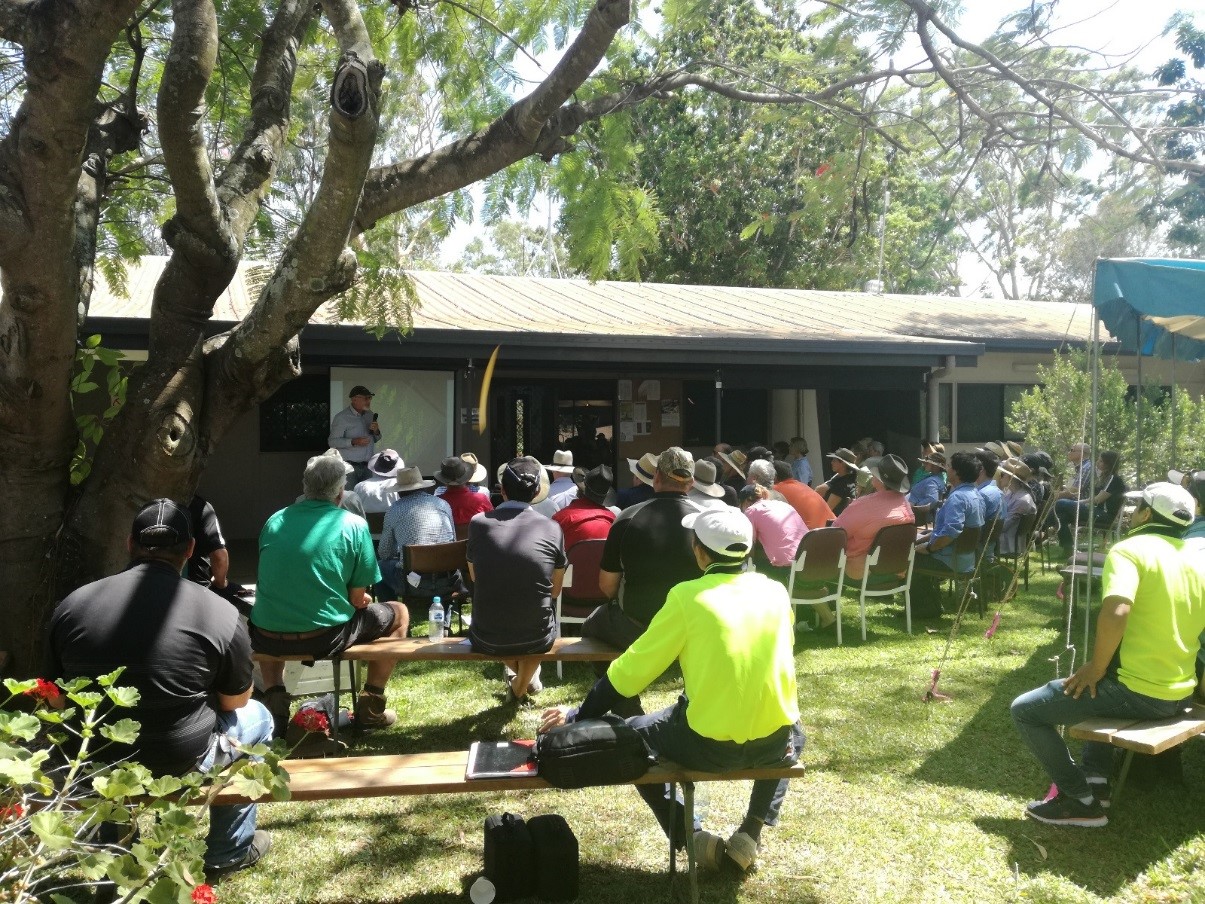Small trees, large potential?
Dr Matt Hall & Dr Danny Guinto attended the recent mango and avocado orchard intensification and robotics field day, Walkamin QLD.
The use of dwarfing rootstocks and high density plantings is nothing new for fruit crops. These cropping systems have been used for decades in stonefruit and pipfruit to drive efficiencies and returns for growers. It is, however, a new concept for terminal bearing evergreen fruit crops such as mango and avocado. The Queensland Department of Agriculture and Fisheries (QDAF) recently hosted a field day at their Walkamin Research Facility to discuss their research into rootstocks and high density plantings.
Rootstocks are used to regulate tree vigour by diverting more energy from photosynthesis into the fruit and less into root and canopy growth. This results in smaller, slower growing trees which require less pruning, are easier to harvest and can be planted at closer spacing to produce significantly higher yields per hectare.
“Kensington Pride is the most vigorous rootstock and is widely used in the industry as it’s convenient. The key message from QDAF was that to reduce tree vigour, any other rootstock is preferable to KP.”
This cropping system has worked extremely well for deciduous fruit crops where fruiting buds are formed on wood from the previous season. The challenge for terminal fruiting crops such as mango and avocado, is that flowering buds form on hardened vegetative growth over the preceding summer. Therefore, reduced vigour has the potential to lead to less vegetative growth and, as a consequence, less flowering sites. Growers in the NT currently control vigour by immediately pruning trees after harvest and then drought stressing them coming out of the wet season to promote early flowering. As a result, considerations around the management of tree vigour in the NT are very different to those on the Atherton Tablelands in Queensland where vigour control is a significant consideration of orchard management.
This change from a conventional planting density of ~200 trees/ha to an intensive high density planting of ~1,200 tree/ha has the potential to significantly increase yield on a per hectare basis. The QDAF mango trial includes the varieties Keitt, Honey Gold, Calypso™ and NMBP 1243 (national mango breeding program, Kensington Pride hybrid) planted at low (208 trees/ha), medium (416 trees/ha) and high (1250 tree/ha) densities. Trees at the highest density were also trained using a trellis system. Trees are currently five years old with a wide range of data being collected over this period. This data indicates that for a conventional planting density of ~200 trees/ha the yield for Calypso™ is ~8 t/ha compared to ~34 t/ha for a high density planting with ~1,200 plants/ha. This represents a significant improvement to production on an area basis, as has been achieved in deciduous systems. However, on a per tree basis there doesn’t seem to be any benefit to high density plantings as low density plants achieved on average 40 kg/tree while high density plantings achieved 28 kg/tree.
High density plantings in the Katherine region are planned for early next year. If you would like more information, please contact Matt (Darwin) or Danny (Katherine).
matt.hall@nt.gov.au or 0422 938 529; danilo.guinto@nt.gov.au or 08 8973 9737
Give feedback about this page.
Share this page:
URL copied!
